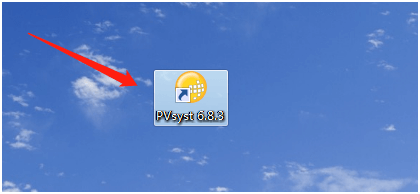

Easy choice of modules by manufacturers.
#Pvsyst 6 full
New parameters: IAM profile in the module's parameters, Vmax(UL) for use in US, full tolerance definition, LID for crystalline and Light-soaking for CIS. Sandia model implementation, and comparison with the one-diode model. Import of a measured I/V curve for the establishment of the model's parameters. Modification of the default values for Gamma, when Rseries is not explicitely defined by the manufacturer, giving significant higher yields of 2-3%. Low-light efficiencies may be included in the parameters in the database. Tools for specifiying low-light performances, and adjustment of the Rserie parameter accordingly. Detailed calculation of the I/V characteristics under partial shadings in each Inverter input, either as pedagogic plot, and during the simulation for the determination of the "electrical losses" due to the shading mismatch. Attribution of each module to a given string and inverter. Modules arrangement in portrait or landscape, sub-modules in length or width within each module. Refinement of the "module layout" part, which allows to define the position of each PV module on the areas ("tables") defined in the 3D shading tool. Plants following the terrain, imported by Helios3D: analysis of the spread of orientations, management of the orientation average. Optimization of the calculation of the shading factor, allowing calculations of big PV plants without limitation to some hundredth of trows or trackers (factor of 10 on the speed). Direct shading factor calculation during the simulation (avoiding the interpolation uncertainties in the shading factor table). Batch mode for parametric studies: allowing to vary parameters in an EXCEL document, and get chosen simulation results of multiple runs as a table. New losses like LID, System unavailability, Inverter auxiliary or night consumption, Light-soaking gains for CIS. Losses: new organization of the loss diagram. Improved project management: copy, saving, transfers of calculation versions from projects to projects, copy of full projects. New Project management Dashboard, with direct access to all parameters, simulation and results in a single dialog. New Project management and simulation process

Transposition model on tilted planes: Perez model now proposed as default instead of Hay, leqading to an increase of 0 - 2% yearly sum according to climate and orientation. Included import of meteo values from new databases, for example SolarAnywhere (SUNY model) satellite recent data covering the whole USA. Synthetic generation of hourly values uses now the Meteonorm algorithm, improved by respect to the old PVsyst algorithm. Immediately get the monthly meteo values for any site, using the interpolating possibilities of Meteonorm 6.1.

Direct search of any location on the earth, using the well-known GoogleMap tool. We list here the main improvements by respect to the previous version 5: We also encourage any suggestion for the improvement of the software. When it appears, please don't hesitate to accept sending the error report to us. From V 6.21, there is a powerful tool for reporting crashs of the program to the developers. Therefore you are asked for carefully reporting the errors you can encounter when using the program, by providing explanations of the problem, screenshots of the error messages, Log files, etc. Some improvements may have consequences on other parts of the program, and some parts will probably have to be updated according to these new features.

#Pvsyst 6 software
The version 6 is a major release of the software PVsyst.Īs in most complex software, deep modifications may lead to unexpected behaviors in parts which were previously stable.Īlthough we intensively check before issuing each issue, it is really impossible to test or re-test every feature of the program, in any situation.


 0 kommentar(er)
0 kommentar(er)
